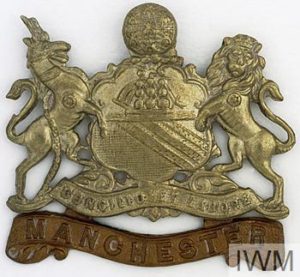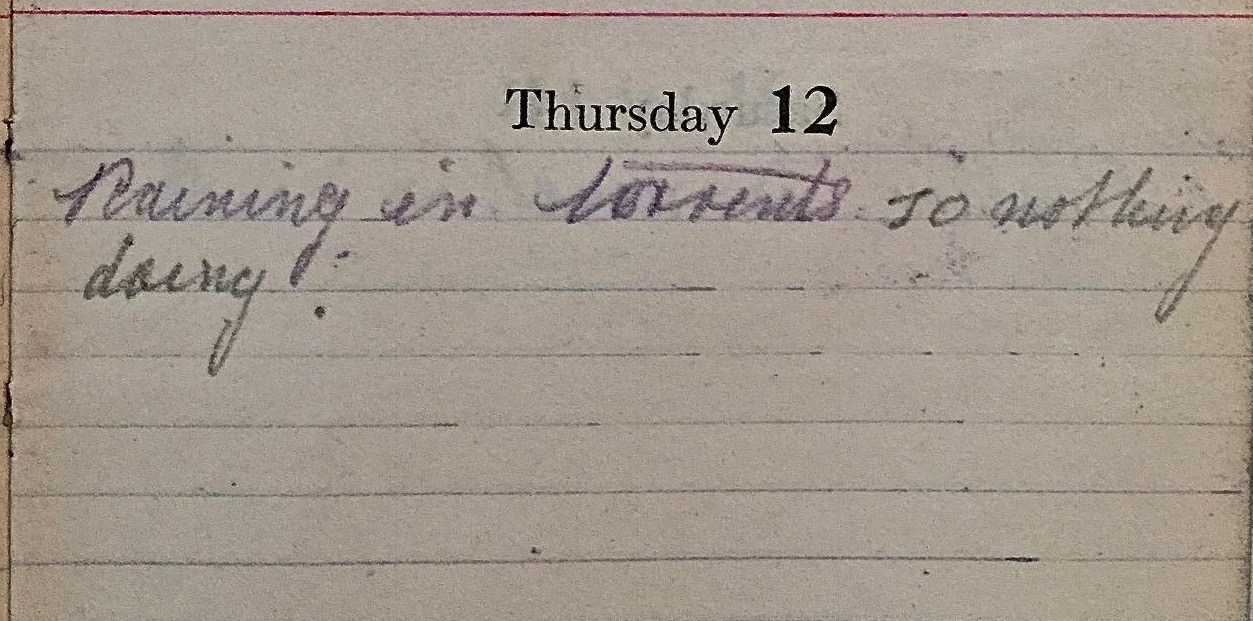Thursday September 12th, 1918
Raining in torrents. So nothing doing.
Territorial Battalions
Today, the Battalion’s Diary confirms both the 9th as a Territorial Battalion and the demise of the 13th (Service) Battalion.
The Territorial Force was created in 1908 by the then Secretary of State for War, Richard Haldane. It was intended to help fulfill Britain’s military obligations without resorting to conscription. The new Force was designed to consolidate the Volunteer Force and the yeomanry, and to closely integrate it within the Regular Army’s regimental structure.
However the Territorial Force failed to live up to early expectations and recruitment was disappointing. Furthermore, with overseas service optional for recruits, it was regarded as something of a joke by those in the Regular Army.
This encouraged Lord Kitchener and the authorities to initially bypass the Territorials when looking to supplement the Regular Army at the outbreak of war. Instead they created the New Army to fill this role and the Territorials were given responsibility for home defence and garrisons. However, faced with mounting losses, this distinction didn’t last long and soon the Territorials were being deployed overseas. The right to opt out of foreign service also ended in March 1915.
Bravery in Battle
Despite this shaky beginning, the Territorial Force played a crucial role in WWI:
‘Between August 1914 and December 1915, the Territorial Force had attracted nearly 726,000 recruits, approximately half the number that had volunteered for the New Army over the same period. …. 71 awards of the Victoria Cross, Britain’s highest award for valour, were made to territorial soldiers, including two of only three bars ever awarded. … Compromised in conception and ridiculed in peacetime, the Territorial Force had filled the gap between what was effectively the destruction of the regular army in the opening campaigns of the war and the arrival of the New Armies in 1915.’¹
Consequently, when war breaks out again in 1939, the Territorial Army will be suspended and the war fought by a single, integrated British Army from day one.
9th (Territorial) Battalion

The origin of the 9th (Territorial) Battalion of the Manchester Regiment can be traced to 1859 when two companies of rifle volunteers were formed in Ashton Under Lyne. By 1866 this had grown into the 23rd Lancashire Rifle Volunteers. Under the 1881 Cardwell reforms the unit became attached to the newly formed Manchester Regiment and designated the 3rd Volunteer Battalion. Subsequently, it became the 1/9th (Territorial) Battalion at the outbreak of war.º Posted overseas in September 1914, the battalion would serve in Egypt, Gallipoli and France.²
The image shows the headdress badge of the Manchester Regiment which depicts the coat of arms of the city. The insignia was not universally popular and often referred to as ‘the tram conductor’s badge’. Consequently it will be replaced in 1923 by a simple fleur-de-lys.*
Absorbing the 13th, the 9th (Territorial) Battalion, Manchester Regiment, will go on to play its part in the Hundred Day Offensive and the closing stages of the war.
9th Battalion War Diary – 12th September 1918 – Haudricourt
Training as per programme. Following received from Headquarters, 66th Division. MS to C in C 6306. 66th Division 6683/17/A. With reference to the attached, the 9th Battalion, Manchester Regt and the 6th Battalion, Lancashire Fusiliers are Territorial Battalions, and the 13th Battalion, Manchester Regiment and the 12th Battalion, Lancashire Fusiliers have ceased to exist. (Sd)… Lt Col AMS for Major General, Military Secretary to Commander-in-Chief. GHQ 3-9-18.
References & Further Reading
º 9th Battalion, Manchester Regiment on the Manchesters
¹ Territorial Force on Wikipedia
² Manchester Regiment on the Long Long Trail
* INS 7219, copyright Imperial War Museums


